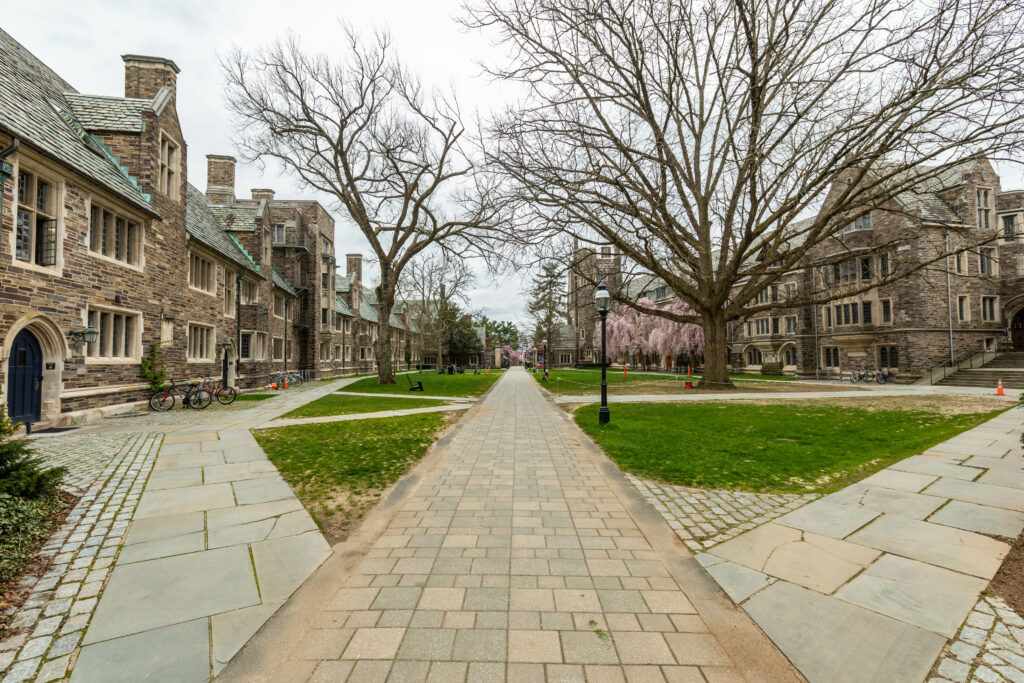A years-long decline in university enrollment has only accelerated during the past several years of lockdowns. What will this mean for higher education revenue and alumni giving?
“More than 1 million fewer students are enrolled in college now than before the pandemic began.” So stated the January NPR report citing data from the National Student Clearinghouse Research Center. From 2019 to 2021, colleges and universities across the country saw a 6.6% drop in enrollment.
It is important to understand this in the scheme of admissions trends. Enrollment has been on a strong downward trend for years. From 2011 to 2019, for example, college enrollment went down by 11%. Nonetheless, it did intensify in the last two years.
In all likelihood, this is due to the pandemic, the lockdowns, and the ongoing remote learning. Classes went virtual and students were sent home. Then (some) students came back but were made to wear masks, avoid social interaction, and, in many cases, continue taking classes online from their dorm rooms.
What remains to be seen, however, is what effect these trends will have on college fundraising. I had the opportunity to sit down with James Werner, executive vice president of advancement at Affinaquest, to dig into this question.
Traditionally, alumni play a significant role in college fundraising. As Werner put it, “Universities are in an interesting position as compared to other nonprofits. They have a built-in, known, constituency … as a college or university you know that you have X number of people who spent years of their life here.” The college experience instills affinity like nothing else can. Not only do students spend a good number of years at these institutions, but they are also their most formative years.
This is precisely why alumni are such a fundamental part of university fundraising. As we’ve discussed before, people give money to nonprofits because of identity and belongingness. Attending a particular university gives alumni a deep sense of those two things.
So, what does all that identity and belongingness amount to? On average, alumni giving is the second-largest source of revenue for universities. According to Hanover Research, “In 2017, alumni giving accounted for 26.1% of all higher education donations, totaling $11.37 billion—an increase of 14.5% from 2016.”
Despite this, the percentage of alumni that give has gone down. Hanover Research tells us “Only 5% of alumni from public universities donated to their alma maters, while 18% of private university alumni participated in giving.” Naturally, if the percentage of alumni giving goes down but the sum of alumni giving goes up, then the amount per gift is going up—which is a trend we are seeing outside of the university as well.
Werner told me that “the top of the giving pyramid, the truly major gifts, are representing a wildly disproportionate amount of the total revenue [universities] bring in.” Werner noted that historically this section of the giving pyramid has been somewhere around 80 to 90 percent of the money coming from 10 to 20 percent of donors. Now, however, in many institutions, it is as dramatic as 95 percent of dollars coming from 5 percent of donors. And, in some particularly drastic instances, 98 percent of dollars is coming from 2 percent of donors. A great example of this is Michael Bloomberg’s $1.8 billion 2018 gift to John’s Hopkins.
This suggests that the dip in enrollment—and the subsequent dip in alumni—may not result in a dip in revenue. In the first place, as Werner put it, “100 percent of your alumni don’t give every year.” A school that gets 35 to 40 percent alumni giving is doing very well. And it may be that the people who are opting out of college are not the type of alumni who would have been in that minority anyway. Therefore, we may see some changes from the downward trend in enrollment but at this point, it’s not entirely clear that that will be the case. We will have to wait to see if this smaller set of alumni are more or less dedicated to their universities.
Nonetheless, things trend downward for higher education. It is likely that some, if not many, institutions of higher education will have to shut their doors. So, how can universities avoid this? Werner suggests that part of what is needed is for universities to find their niche and advertise it well. He told me, “we engage in a lot of generalities when we talk about the value of liberal arts education and I think we are going to really have to drill down and specify what that means for the individual student.” This is not to say, Werner notes, that college should just be like “trade schools.” But universities, he argues, would benefit from a greater specificity of mission.
Werner is right on this point, of course, and the point is relevant beyond universities. Nonprofits, whatever area they are in, can’t be everything to everyone. They need to have a strong identity and a clear mission. Those universities that will flounder will be those that lack strategic priorities for the future, as well as a clear—and differentiating—identity. They will be those that attempt to appease all manner of people, stakeholders or not. You can see, at institutions like Hillsdale College or Benedictine College, leaning into their specific identity, the opposite story, where knowing who they are and who they can attract behooves them.






